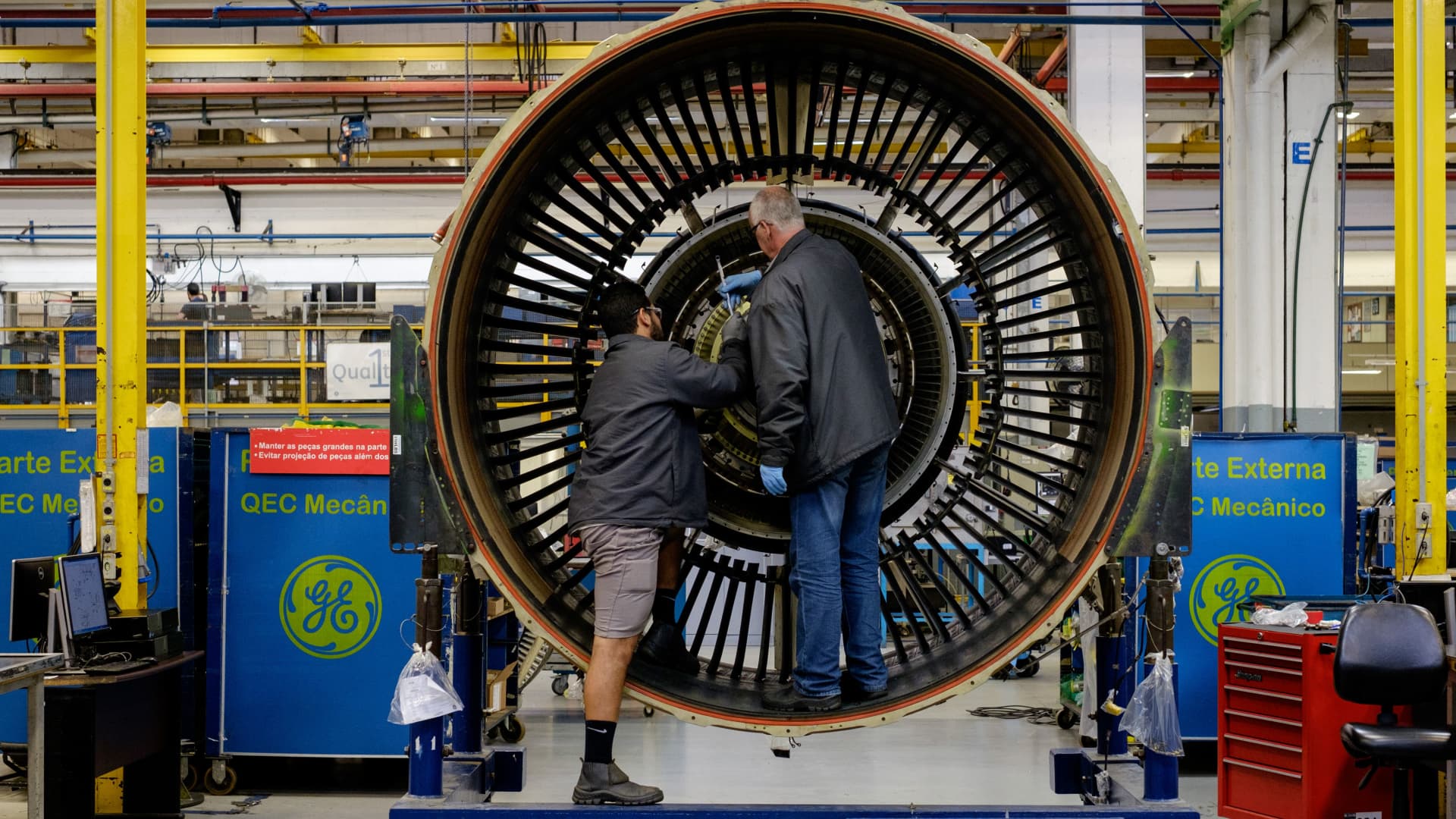Global Trends and Politics
Empowering Women Through Sports

Hollywood Icon Whoopi Goldberg Launches All-Women’s Sports Network
Whoopi Goldberg, a Hollywood icon, has launched an all-women’s sports network, hoping to bring more attention to women’s sports. The network, called All Women’s Sports Network (AWSN), is a first-of-its-kind global media channel dedicated exclusively to highlighting women’s sports.
Motivation Behind the Launch
Goldberg’s childhood passion for sports and her desire for greater female representation in the field inspired her to start the network. She wants to provide opportunities for little girls to have a similar experience she had, following their favorite players and teams. "I want little girls to have what we used to call baseball cards for their new favorite players, and I want them to follow just like I used to follow Mickey Mantle," Goldberg said.
Network Features and Availability
AWSN is available via Vizio WatchFree+, a free streaming service, in the U.S., as well as through international partners in India, the United Arab Emirates, Saudi Arabia, and the Philippines. The network will air 2,000 hours of live sports this year and into 2025, featuring a wide range of sports, including soccer, basketball, volleyball, field hockey, cricket, judo, and table tennis.
Impact on Women’s Sports
Goldberg hopes the growth of women’s basketball and soccer will help put the spotlight on other women’s sports. "We started to see amazing basketball being played, and I think more people said, ‘Hey, I want to watch more of that.’ What other sports are women playing that we don’t know about? Like hockey or roller derby. I love roller derby. I want America to have a roller derby team," she said.
Partnership and Future Plans
Goldberg partnered with George Chung, co-founder of international media holding company Jungo TV, to launch the network. Chung stated that Vizio currently reaches 20 million television sets, and AWSN expects to be available on over 100 million devices in the U.S. within the next three to four months.
Conclusion
AWSN aims to provide a platform for women’s sports to reach a broader audience, highlighting the achievements and talents of female athletes. With its global reach and wide range of sports coverage, the network has the potential to make a significant impact on the world of women’s sports.
Frequently Asked Questions
Q: What is the purpose of All Women’s Sports Network (AWSN)?
A: AWSN is a global media channel dedicated to highlighting women’s sports, aiming to bring more attention and recognition to female athletes.
Q: Who is behind the launch of AWSN?
A: Whoopi Goldberg and George Chung, co-founder of Jungo TV, launched the network.
Q: How can I access AWSN?
A: AWSN is available on Vizio WatchFree+ in the U.S. and through international partners in India, the United Arab Emirates, Saudi Arabia, and the Philippines.
Global Trends and Politics
The Energy Industry’s Social Responsibility: A Look at the Impact of Fossil Fuels on the Environment

As the world grapples with the challenges of climate change, corporate social responsibility and politics have become increasingly intertwined. The energy industry, in particular, has come under scrutiny for its role in perpetuating environmental degradation. With the growing demand for sustainable practices, companies are being held accountable for their impact on the planet. In this article, we will delve into the world of fossil fuels and explore the social responsibility of the energy industry in mitigating its effects on the environment.
Understanding the Impact of Fossil Fuels
The extraction, production, and consumption of fossil fuels have severe consequences on the environment. The burning of coal, oil, and gas releases greenhouse gases, such as carbon dioxide and methane, which contribute to global warming. The effects of climate change are far-reaching, from rising sea levels to intense natural disasters. For instance, the 2019 Amazon rainforest fires, which were largely caused by human activities, including deforestation and land clearing for fossil fuel exploration, had devastating consequences for the environment and local communities.
The Role of Governments and Regulations
Governments and regulatory bodies play a crucial role in shaping the energy industry’s social responsibility. The implementation of policies and laws can either encourage or hinder the adoption of sustainable practices. The Paris Agreement, for example, aims to limit global warming to well below 2 degrees Celsius and pursue efforts to limit it to 1.5 degrees Celsius above pre-industrial levels. However, the withdrawal of the United States from the agreement in 2020 has raised concerns about the country’s commitment to reducing its carbon footprint.
The Energy Industry’s Response to Climate Change
In recent years, the energy industry has begun to acknowledge its role in contributing to climate change. Many companies have started to invest in renewable energy sources, such as solar and wind power, and have set targets to reduce their carbon emissions. For instance, Royal Dutch Shell has set a target to reduce its net carbon footprint by 20% by 2035, while BP has announced plans to increase its investment in renewable energy to $5 billion by 2025. However, critics argue that these efforts are insufficient and that more needs to be done to address the scale and urgency of the climate crisis.
Case Study: ExxonMobil’s Climate Change Controversy
ExxonMobil, one of the world’s largest oil and gas companies, has faced intense scrutiny over its handling of climate change. In 2015, it was revealed that the company had known about the risks of climate change since the 1970s but had failed to disclose this information to the public. The company has since faced numerous lawsuits and investigations, including a high-profile case in New York, which alleged that ExxonMobil had misled investors about the risks of climate change to its business.
Sustainable Alternatives and Innovations
The transition to a low-carbon economy requires the development and implementation of sustainable alternatives to fossil fuels. Renewable energy sources, such as solar and wind power, have become increasingly cost-competitive with fossil fuels, making them a viable option for many countries. Electric vehicles, for example, have seen a significant surge in popularity, with many countries investing heavily in EV infrastructure. Companies like Tesla and Vestas are leading the charge in the development of sustainable technologies, with innovations such as battery storage and smart grids.
Carbon Capture and Storage: A Viable Solution?
Carbon capture and storage (CCS) technology has been touted as a potential solution to reducing carbon emissions from fossil fuel power plants. The technology involves capturing the carbon dioxide emissions from power plants and storing them underground, rather than releasing them into the atmosphere. However, the high cost of CCS technology has limited its adoption, and critics argue that it is not a viable solution to the climate crisis.
Public Awareness and Activism
Public awareness and activism have played a crucial role in holding the energy industry accountable for its impact on the environment. The rise of social media has enabled activists to mobilize and raise awareness about climate change, with hashtags such as #ClimateAction and #FossilFree gaining traction. The Extinction Rebellion movement, which began in the UK in 2018, has used non-violent direct action to draw attention to the climate crisis and push for policy changes.
Investor Pressure and Divestment
Investors are increasingly putting pressure on companies to adopt sustainable practices and reduce their carbon footprint. The divestment movement, which involves withdrawing investments from fossil fuel companies, has gained momentum in recent years. Universities, pension funds, and other institutions have divested from fossil fuel companies, citing the financial and moral risks associated with investing in an industry that contributes to climate change.
Conclusion
The energy industry’s social responsibility to mitigate its impact on the environment is a pressing issue that requires immediate attention. While some companies have made efforts to reduce their carbon footprint, more needs to be done to address the scale and urgency of the climate crisis. Governments, regulatory bodies, and the public must work together to hold the energy industry accountable and push for a transition to a low-carbon economy. The future of our planet depends on it.
Frequently Asked Questions
What is the main cause of climate change?
The main cause of climate change is the burning of fossil fuels, such as coal, oil, and gas, which releases greenhouse gases, such as carbon dioxide and methane, into the atmosphere.
What is the role of governments in addressing climate change?
Governments play a crucial role in shaping the energy industry’s social responsibility by implementing policies and laws that encourage the adoption of sustainable practices and reduce carbon emissions.
What are some sustainable alternatives to fossil fuels?
Sustainable alternatives to fossil fuels include renewable energy sources, such as solar and wind power, as well as electric vehicles and battery storage technologies.
How can individuals make a difference in addressing climate change?
Individuals can make a difference by reducing their carbon footprint, investing in sustainable technologies, and supporting companies that prioritize environmental sustainability. They can also engage in activism and advocacy efforts to push for policy changes and hold companies accountable for their impact on the environment.
Global Trends and Politics
Gold Surges to Record High Amid Global Economic Uncertainty

Gold prices have soared to unprecedented levels, reaching a record $3,500 per ounce, as investors seek safe-haven assets amid escalating economic and political uncertainties.
Key Factors Driving the Surge:
-
Political Tensions: Recent criticisms by President Donald Trump towards Federal Reserve Chair Jerome Powell have raised concerns about the Fed’s independence, leading to market volatility and a flight from U.S. assets.
-
Economic Indicators: A decline in manufacturing confidence, as reported by the Federal Reserve Bank of Philadelphia, has further fueled fears of an economic slowdown.
-
Central Bank Activity: Central banks, notably China’s, have increased gold purchases, reinforcing the metal’s status as a geopolitical asset.
Market Implications:
The surge in gold prices reflects a broader trend of investors moving away from traditional assets like stocks and bonds, which have experienced volatility due to policy uncertainties. The U.S. dollar index has fallen to a three-year low, further driving demand for gold.
Analysts suggest that while short-term corrections may occur, the underlying demand for gold is likely to sustain its upward trajectory, especially if current uncertainties persist. Goldman Sachs has raised its year-end gold price forecast by $400 to $3,700 per ounce.
Investor Considerations:
While gold is traditionally viewed as a safe-haven asset, experts caution that it can be volatile and is not always a reliable hedge against inflation. The Commodity Futures Trading Commission advises investors to research carefully and be alert to scams, as volatile markets can benefit sellers more than buyers.
Global Trends and Politics
RTX, GE Aerospace Face Over $1 Billion Tariff Impact

Introduction to Tariffs and Their Impact
Men work with a jet engine at General Electric (GE) Celma, GE’s aviation engine overhaul facility in Petropolis, Rio de Janeiro, Brazil. RTX and GE Aerospace expect a more than $1 billion impact combined from President Donald Trump’s tariffs on imported goods and materials, the latest sign of higher prices for major U.S. manufacturers that rely on a global supply chain.
The Estimated Impact of Tariffs
Neil Mitchill, chief financial officer of defense contractor and commercial aerospace supplier RTX, said on an earnings call Tuesday that the company will likely take a $850 million hit this year from tariffs, including the sweeping 10% levies that Trump imposed earlier this month alongside higher duties on countries like China and separate taxes on imported steel and aluminum. That estimate doesn’t include RTX’s own tariff mitigation measures, Mitchill said.
GE Aerospace’s Response to Tariffs
GE Aerospace, which makes engines for popular Boeing and Airbus planes, kept its 2025 earnings outlook in place during its quarterly report Tuesday and said it would seek to save about $500 million by cutting costs and raising prices. GE Aerospace CEO Larry Culp said on Tuesday’s analyst call that he recently met with Trump and discussed the U.S. aerospace sector’s trade surplus. GE has a joint venture with France’s Safran to make popular airplane engines.
The Shift in Global Trade
The new tariffs are a shift for a global industry that has enjoyed mostly duty-free trade for decades. "All we have suggested is the administration works through a myriad of issues, is they can consider the position of strength that the country enjoys as a result of this tariff-free regime," Culp said. The White House didn’t immediately comment.
Impact on the Airline Industry
Boeing, a major customer of both companies and the top U.S. exporter, is scheduled to report quarterly results before the market opens on Wednesday. Airlines have recently announced cuts to U.S. domestic capacity plans this year because of softer demand, but executives have emphasized it is hard to predict the direction of the economy or future trade policies. United last week provided two earnings outlooks for 2025, one in the event of a recession, one assuming status quo.
Uncertainty in the Market
"There is uncertainty," Culp said Tuesday. "None of us, I think, know for sure how this plays out." This uncertainty is reflected in the cautious approach taken by airlines and manufacturers, as they navigate the changing landscape of global trade.
Conclusion
The imposition of tariffs on imported goods and materials is expected to have a significant impact on major U.S. manufacturers, including RTX and GE Aerospace. The estimated impact of over $1 billion combined is a significant concern for these companies, and they are taking steps to mitigate the effects of the tariffs. However, the uncertainty surrounding the future of global trade makes it difficult to predict the outcome, and companies are taking a cautious approach to navigate this changing landscape.
FAQs
Q: What is the estimated impact of tariffs on RTX and GE Aerospace?
A: The estimated impact of tariffs on RTX and GE Aerospace is over $1 billion combined.
Q: How do the tariffs affect the airline industry?
A: The tariffs are expected to lead to higher prices for airlines, which may result in cuts to domestic capacity plans and changes to earnings outlooks.
Q: What is the response of GE Aerospace to the tariffs?
A: GE Aerospace plans to save about $500 million by cutting costs and raising prices.
Q: What is the level of uncertainty in the market?
A: There is a high level of uncertainty in the market, with companies and executives unsure of how the tariffs will play out and what the future of global trade will look like.
-

 Career Advice4 months ago
Career Advice4 months agoInterview with Dr. Kristy K. Taylor, WORxK Global News Magazine Founder
-

 Diversity and Inclusion (DEIA)4 months ago
Diversity and Inclusion (DEIA)4 months agoSarah Herrlinger Talks AirPods Pro Hearing Aid
-

 Career Advice4 months ago
Career Advice4 months agoNetWork Your Way to Success: Top Tips for Maximizing Your Professional Network
-

 Changemaker Interviews4 months ago
Changemaker Interviews4 months agoUnlocking Human Potential: Kim Groshek’s Journey to Transforming Leadership and Stress Resilience
-

 Diversity and Inclusion (DEIA)4 months ago
Diversity and Inclusion (DEIA)4 months agoThe Power of Belonging: Why Feeling Accepted Matters in the Workplace
-

 Global Trends and Politics4 months ago
Global Trends and Politics4 months agoHealth-care stocks fall after Warren PBM bill, Brian Thompson shooting
-

 Global Trends and Politics4 months ago
Global Trends and Politics4 months agoUnionization Goes Mainstream: How the Changing Workforce is Driving Demand for Collective Bargaining
-

 Training and Development4 months ago
Training and Development4 months agoLevel Up: How Upskilling Can Help You Stay Ahead of the Curve in a Rapidly Changing Industry









